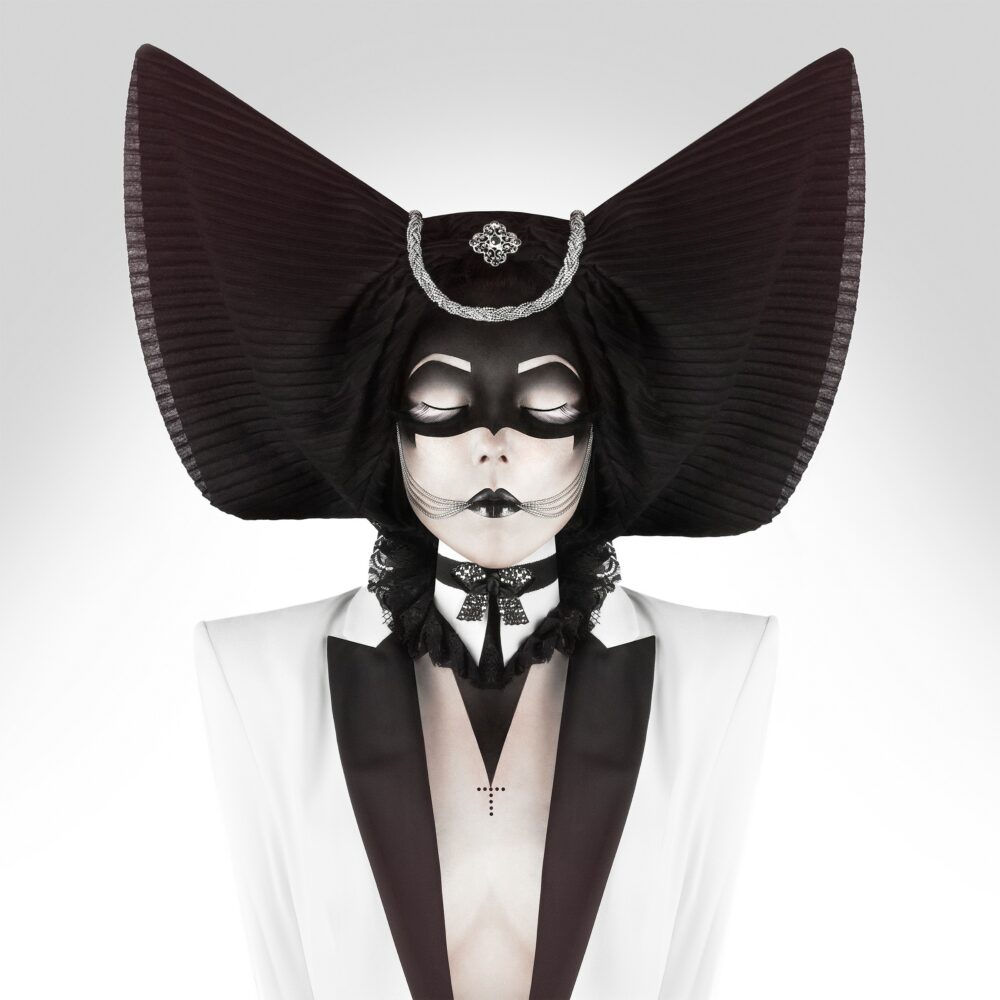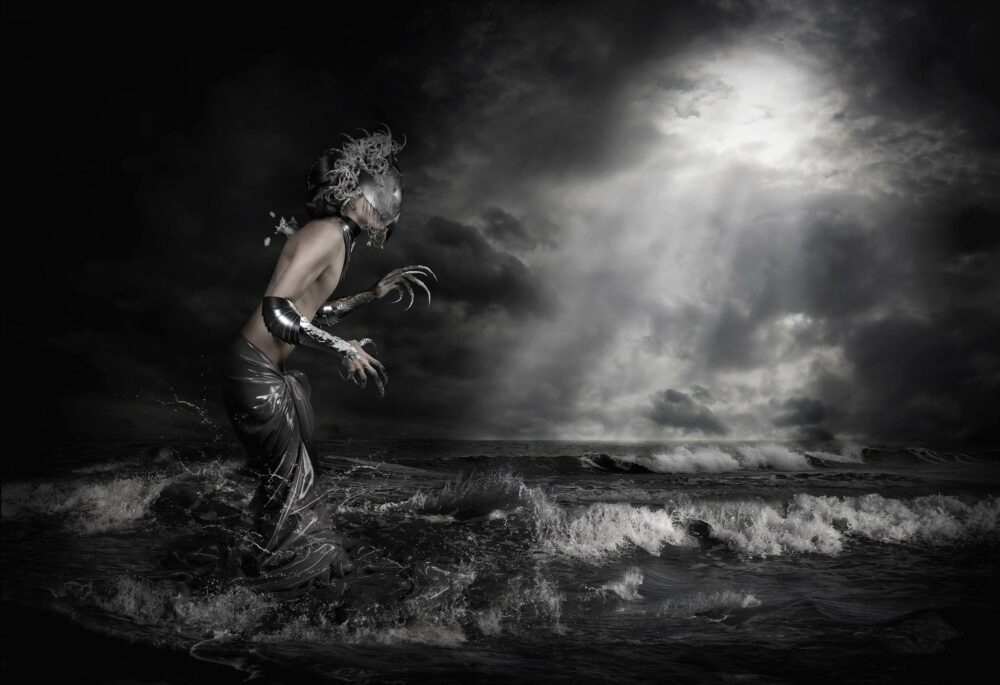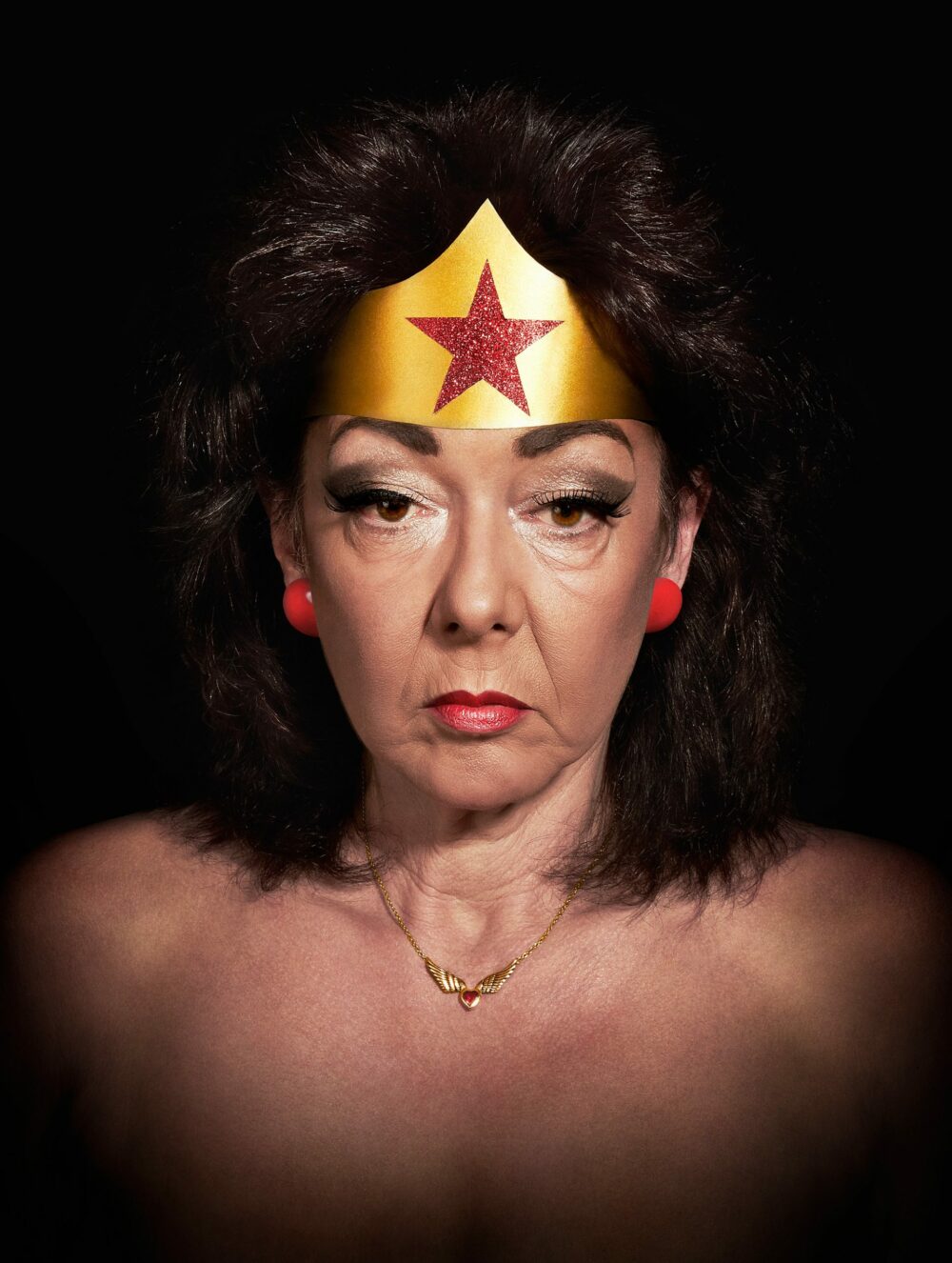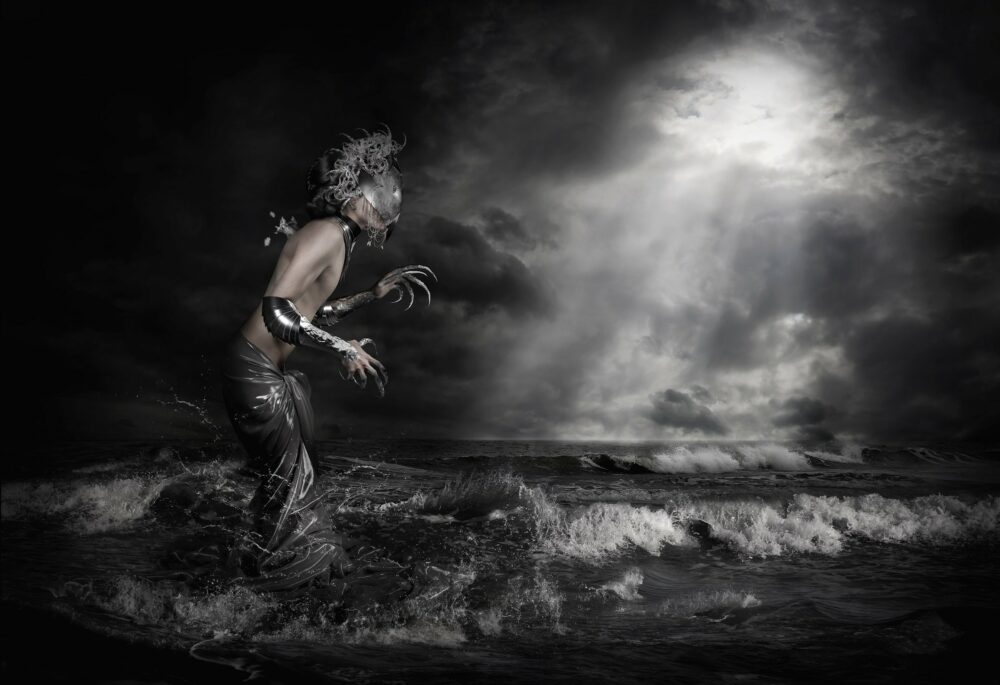Build & shape with Audrey
Audrey Piguet is a young Swiss photographer; her work is build from multiple elements. Drawings, makeup, retouching, lights, most of the time her compositions are made from scratch.
Her work becomes an amazing world of fantasy where reality overlaps. The feeling, somewhere between fascination and anxiety, is absolutely unique.

Tell us how you began photography, but more specifically what brought you to use flash photography.
I began photography at the age of 15. At the time it was an alternative to drawing, which was my first passion. By looking into this medium more closely, I discovered the works of many photographers, members of a very cinematographic trend of photography, working carefully constructed aesthetics, approaching a quasi-pictorial rendering.
When I began my formal training at the Vevey School of Photography (CEPV), I was trained in flash photography and how to create an ambiance using coherent light to embellish the object of the photograph. I immediately enjoyed this aspect of the work, to be able to create and control the light, its direction, its intensity, without being dependent on external elements.
How would you describe your style, what sets you apart from other photographers.
I mainly work in studios, with a keen interest for portraits and staging. I like to build scenes with a dreamlike aspect to them: mix reality and fantasy and play on the fine line between the two. From an aesthetic point of view, I like my photographs to be very smooth, precise, and refined; I am constantly in search of perfection, even though it is highly subjective.
The postproduction work is also a top priority in my process as it allows me to control every little detail of the elements that make up the image. It also lets me create fantasy worlds using specks of reality.

How did you come to use Elinchrom and what drew you to our products?
I came upon the Elinchrom products during my time at the Vevey School of Photography. I enjoyed several key points of the products immediately such as the vast array of choices available within the range of products, for the flash themselves and the accessories used to modulate the light. Their ease of use, their durability, and their designs also made them attractive. I also like the products’ lightweight and practical aspect, without ever compromising quality and efficiency.
Being from, and living in, the Lake Geneva region, buying a local product is also a factor in my decision to purchase the products, as well as having the quality assurance of a “Swiss Made” product.
What is your favorite photography equipment?
For studio work, I mainly work with a number of flash units, specifically the BRX 500. They are light and relatively powerful, which is particularly suitable to the type of work I do. I regularly use large Rotalux softboxes of diverse shapes for the general ambiance of my image, and I accentuate specific elements using light diffusers or a grid hooked on a reflector.
When working outside, I always use the ELB 400. They are light, powerful, easily transportable and are long lasting, therefore perfect for work in the field. As for the actual camera, I work with a Canon 5D Mark III using EF wide-angle lens.
The retouching and compositing aspect is very important to your work, why is that?
Rendering the world as we can already see it does not really interest me. The retouching work is very important to me for several reasons. On the one hand it allows me to reach a very smooth result, at times almost plastic-like. I refine the details and erase the defects. On the other hand it allows me to create scenes that could not exist in reality, whether it is by the elements that make up the image or by the quasi-fantastic light present in some of my images. I see the retouching step as a logical part of the creative flow I undergo when I create an image as it lets me give life to the worlds I imagine.
What is your balance between the compositing technique and the use of flash light?
Light for me has a center stage role in a photograph, regardless of the chosen subject or the way we photograph it. If the light is not interesting, the final product will not be interesting either. Light lets certain elements come to the forefront and hides others…
To me, it is the key to understanding an image, but also a way to tell a story and let the eyes travel from one element to the next within the image.
Although I often use compositing, each of the elements is lit one by one, sometimes solely through the use of a flash, sometimes using a mix of light. This allows me to have this surreal and fantastic rendering in some of my images.

The first steps in using a flash often scares away budding flash photographers, what are some of your suggestions on this question, what would you recommend?
Perseverance! At the beginning, it is not necessarily easy to manage working with light, manage this type of material. I would recommend you start with simple things in a studio, an object for example. Start with a flash, then move it, change its intensity, change your accessories (softbox, reflector, umbrella, etc.), and observe the changes. Observation is key to learn how to work with this technique. You have to progress step by step, starting with one flash, then two, go through several tests, and you will learn as you experiment.
Can you describe your favorite setup?
Generally speaking, I like the main light to be quite direct, so that it highlights the traits of the model. Therefore I use a flash unit with a grid pointed directly at the character, or on the main element of my photograph. I smooth the different unlit parts using large softboxes, generally placed on the sides or on top. My camera is plugged into my laptop, which lets me see the result on my screen immediately and ensure that the rendering is what I had in mind.
Drawing, make-up, costume, shooting, final product. You control everything from A to Z. Is that a personal decision or due to budget constraints?
Managing every aspect of the job is neither an economic gain nor a time saving measure, quite the contrary. I like the idea of constructing a photograph from scratch: imagining it on paper, going through different creative phases before the shoot itself, to finally giving it life and finalizing it on the computer. I construct these images little by little, the same way a painter would construct his or her paintings. The shoot represents the snapshot, where everything comes together and is ready to tell a story.


